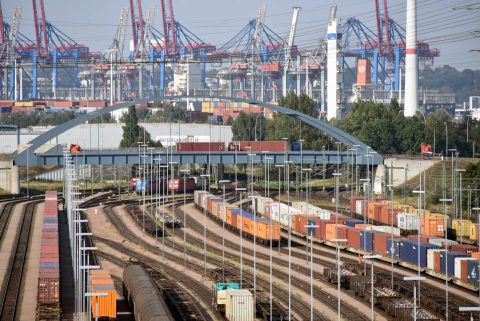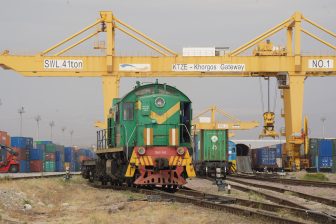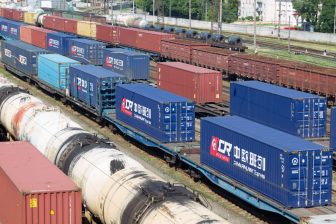
Port of Hamburg: almost a third of cargo to or from China
In 2018, the Port of Hamburg had a total sea freight volume of approximate 8.7 million TEUs, of which some 2.6 million are related to China, according to statistics released by the port. Nowadays, around a third of total cargo through the port is bound for China or originates there. The lionshare is seaborne, but Eurasian rail freight is starting to impact the figures as well.
Marking the tight trade relation, the Vice President of the People’s Republic of China, Wang Qishan, visited the HHLA Container Terminal Tollerort at the Port of Hamburg on Friday 30 May. Wang was welcomed by the Chairwoman of the Executive Board of Hamburger Hafen und Logistik AG (HHLA), Angela Titzrath, Hamburg’s First Mayor, Peter Tschentscher, and representatives of the Chinese container shipping company Cosco Shipping Lines.
Figures
Almost 60 per cent of total volumes derive from Asian markets, with more than 30 per cent coming from China alone. About half of Sino-German trade runs through the Port of Hamburg. More than 550 Chinese companies have settled in the northern German city. Every week, the largest container vessels of Chinese shipping company Cosco Shipping Lines are handled at the facility.
In the meantime, the train connections between the destinations have also grown in number. The first test train travelled from Beijing to Hamburg ten years ago. Today, more than 200 container train connections are offered between Hamburg and 20 industrial centres in China. “Freight transport via the continental Silk Road continues to rise”, pointed Titzrath out.
Historical partners
“China is for us the biggest market, not only these days, but also historically”, Axel Mattern, joint Chief Executive Officer of Port of Hamburg Marketing said. “Hamburg is a classical import and export destination or hub for China.” The Port of Hamburg Marketing is striving to strengthen the partnership of both sides after witnessing the existing trade prosperity.
“We have to identify mutual projects and to combine good ideas together, especially surrounding the Belt and Road Initiative”, said Mattern. “We shall be further strengthening and expanding our location in terms of transport geography for the benefit of our worldwide port customers. Hamburg is well positioned and prepared to be part of the initiative.”





